10 Best B2B Lead Generation Tools to Grow Sales in 2025
B2B lead generation, lead generation tool, lead generation software, B2B sales, CRM integration, HubSpot Marketing Hub, LinkedIn lead generation, lead management, lead qualification, high quality leads, AB testing, best lead generation tool 2025, free plan, paid plan
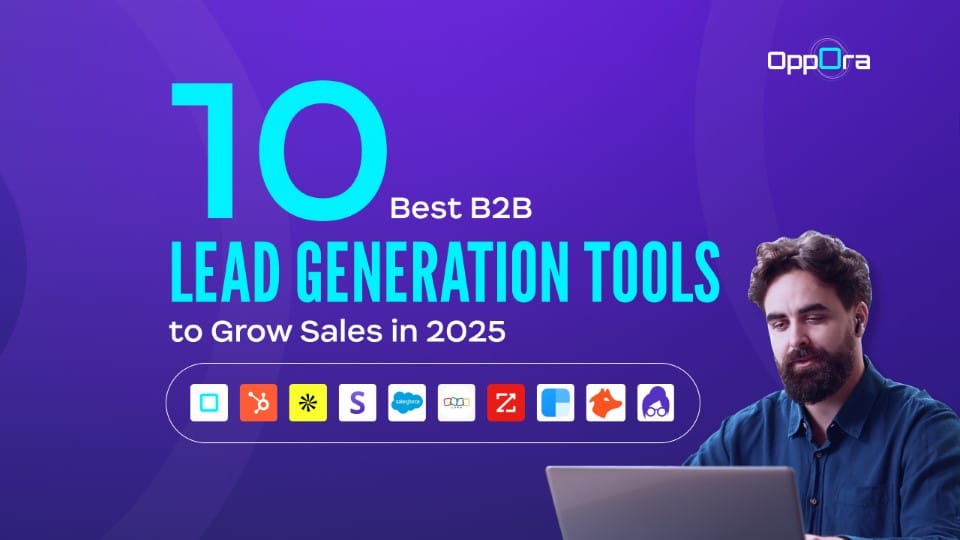
Let’s be honest, B2B sales in 2025 aren’t a walk in the park anymore. Buyers are smarter, busier, and less forgiving than ever. They don’t wait for your cold email to learn about your product. By the time your message lands in their inbox, they’ve already checked your competitors, read reviews, compared case studies, and made up their minds about what they need.
In fact, research shows that 70% of the buyer’s journey is complete before a sales rep ever enters the conversation. That means fewer chances to grab attention and far less tolerance for mistakes.
If you’re still relying on manual prospecting, endless spreadsheets, and gut feeling, you’re already behind. This is why B2B lead generation software isn’t just “nice to have” anymore, it’s the difference between a sales team that constantly chases unqualified prospects and one that closes high-quality leads on a predictable basis.
These tools do the heavy lifting: finding potential leads, verifying contact details, enriching profiles with insights, and even automating campaigns. The result? Your team spends less time chasing dead ends and more time focusing on qualified leads who actually want to buy.
How B2B Lead Generation Tools Actually Work
Think of a lead generation tool as your sales sidekick. Instead of manually digging through LinkedIn or Google Sheets, the software automates the process. Let’s break it down with examples:
❒ Prospecting:
Imagine you’re targeting CFOs of SaaS startups in North America. Instead of scrolling endlessly on LinkedIn, you enter your criteria, and the tool instantly shows you a list of potential leads that match.
❒ Verification:
had a campaign where half your emails bounced? With built-in verification, these tools check email validity before you hit send. One Oppora.ai user reduced their bounce rate by 60% simply by running all contacts through automated verification.
❒ Enrichment:
Getting an email isn’t enough. You need to know a company’s size, revenue, funding stage, industry, and tech stack. Tools like Clearbit or Oppora.ai enrich profiles with this context, making it easier to craft personalized campaigns that convert.
❒ Outreach:
Instead of sending 100 copy-paste emails, modern tools allow AB testing of subject lines, personalized templates, and automated multi-step sequences across email and LinkedIn. That means your marketing team can test what works best, while sales reps focus on conversations.
❒ CRM Integration:
Every captured lead, campaign result, and reply automatically syncs with your CRM tool (e.g., Salesforce, HubSpot CRM, or Zoho). This eliminates the chaos of managing contacts in separate places and ensures smooth lead management.
👉 In short, these tools save time, protect your sender reputation, and make lead qualification at scale possible.
Benefits of Using B2B Lead Generation Software
Why invest in lead generation software when manual prospecting is free? Because automation delivers measurable ROI. Here’s how:
- Time Savings: Tools like Oppora.ai save sales reps 4+ hours daily by eliminating manual tasks. Instead of juggling 5 apps, everything from capturing leads to CRM sync happens automatically.
- Better Targeting: Advanced filters and AI scoring ensure you chase qualified leads instead of wasting time on unfit contacts.
- Cost Efficiency: Many B2B companies spend more on bad data and failed campaigns than they would on a solid lead gen tool. Consolidating tools reduces costs.
- Improved Collaboration: With centralized data, marketing teams and B2B sales reps stay aligned, reducing friction in campaigns.
- Scalable Personalization: Automated enrichment + dynamic templates allow personalization even for thousands of prospects.
💯 Case Example: A mid-sized SaaS company switched from manual prospecting to Oppora.ai. Within 3 months, they doubled their response rate, cut lead qualification time in half, and saved $5k/month in wasted ad spend.
Free Plan vs. Paid Plan: What’s the Difference?
✅ Bottom line: Free plans are great for testing, but scaling requires paid plans with full features.
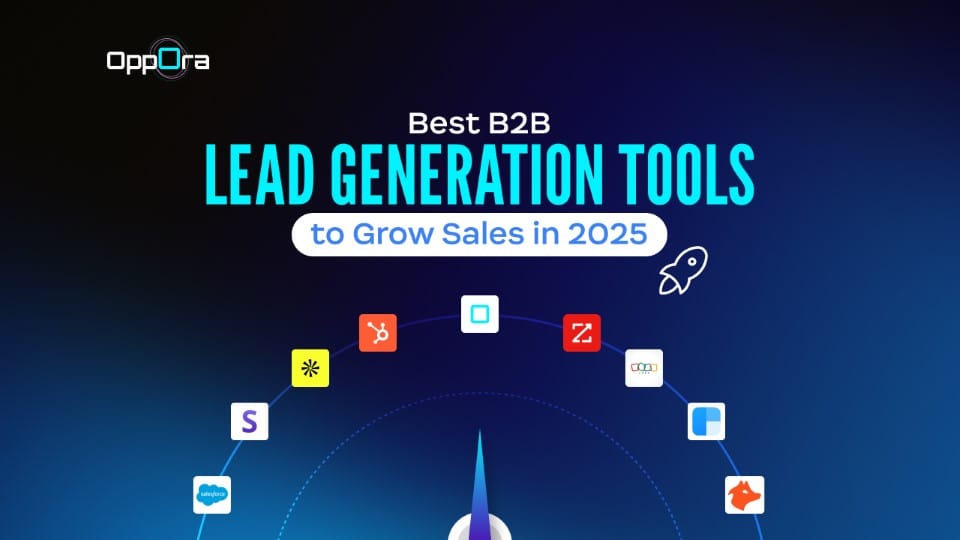
The 10 Best B2B Lead Generation Tools in 2025
Let’s break it down tool by tool, what they do best, and who should use them.
Oppora.ai, HubSpot, Apollo.io, Snov.io, Salesforce,
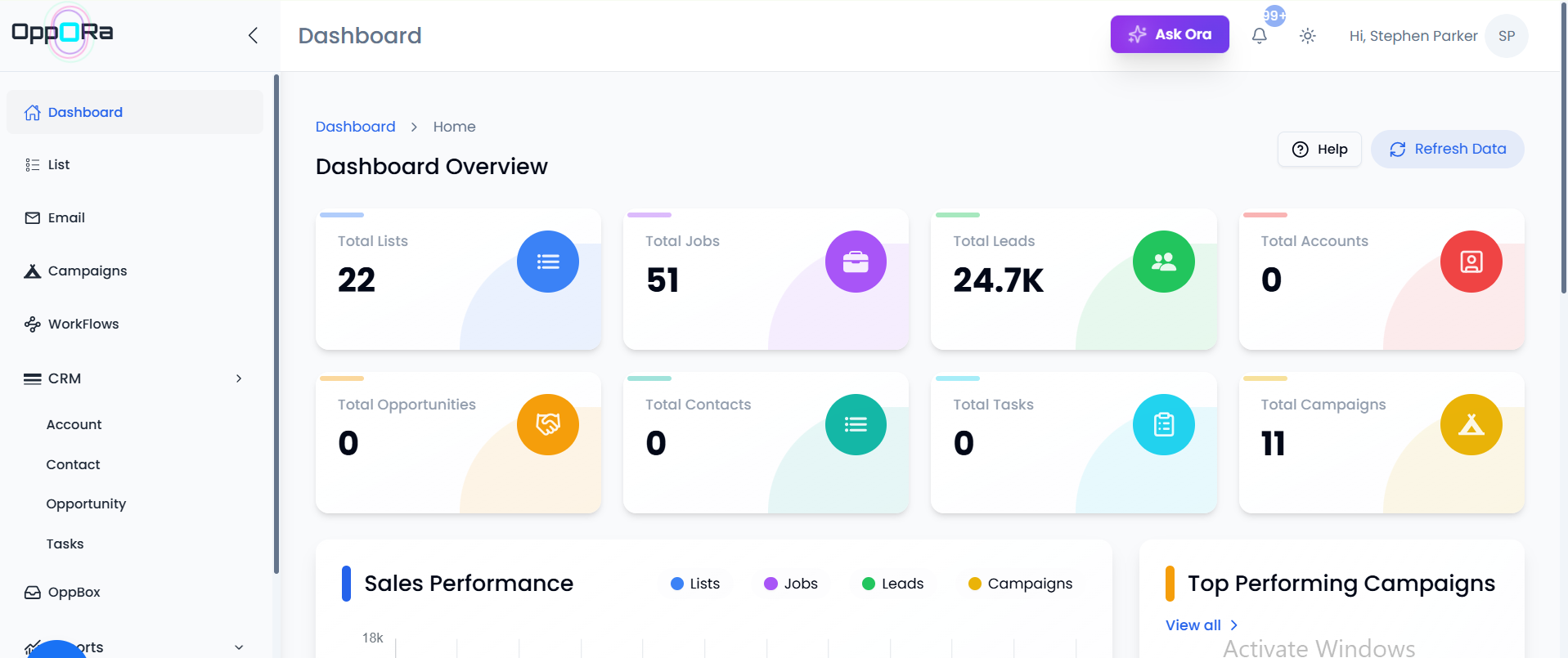
1. Oppora.ai – Your All-in-One AI Sales Partner:
Here’s the problem: most sales teams use 4–5 different tools for prospecting, email finding, scoring, and outreach. The result? Clunky workflows, wasted hours, and way too many tabs open.
Oppora.ai fixes that by bringing everything into one AI-powered platform. It doesn’t just give you a list ,it scores, verifies, and prioritizes leads automatically. Then it launches campaigns, tracks replies, and syncs everything back to your CRM.
Why it’s awesome: You can go from finding a lead on LinkedIn to sending them a personalized campaign in under 30 minutes, without touching a spreadsheet.
Key Features:
- Chrome Extension for one-click lead capture
- Ask Ora AI assistant for instant sales advice
- Automated workflows (prospecting → outreach → CRM)
- AI personalization variables and templates
- Multi-step campaigns across LinkedIn + email
- AI Scoring so you only focus on hot leads
- Oppobox unified inbox for managing replies
👉Best For: Startups, SMBs, and busy sales teams who want to save 4+ hours daily and ditch tool overload. Explore Now....
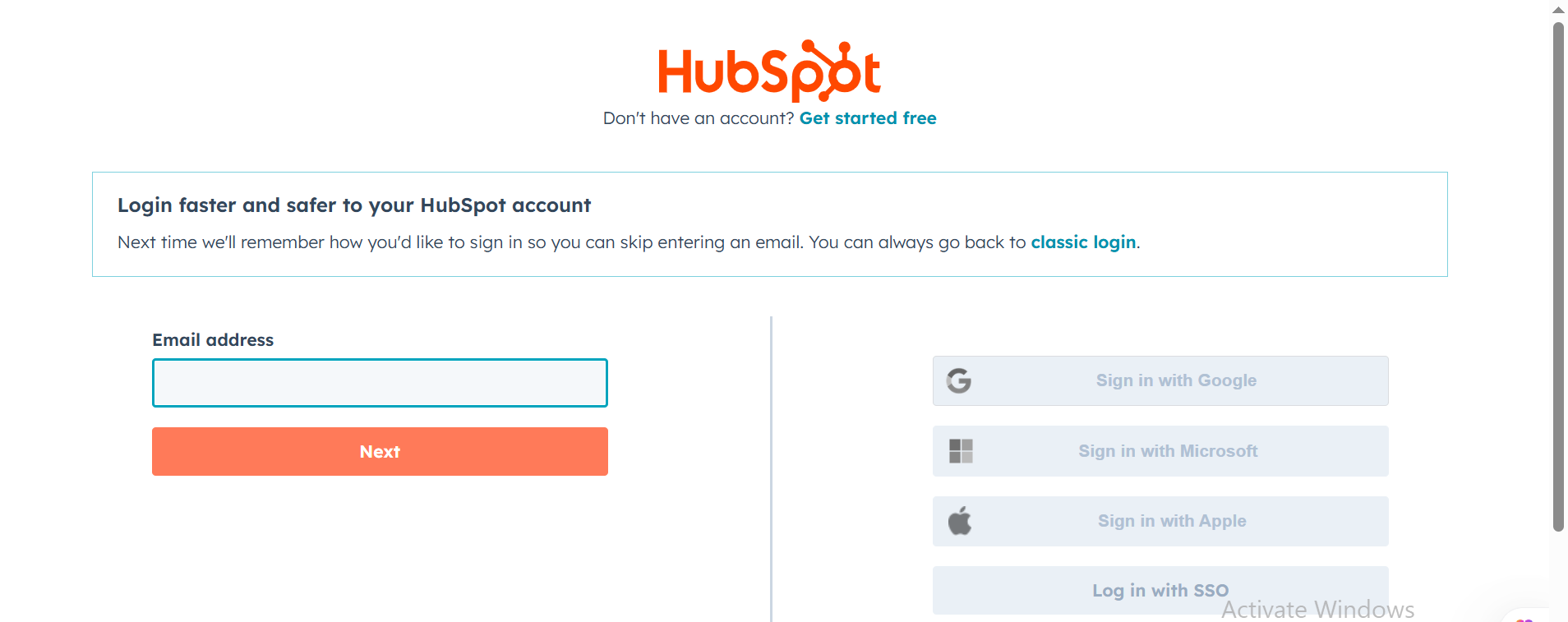
2. HubSpot – The Inbound Magnet:
If your sales strategy is more about attracting leads than chasing them, HubSpot is your best friend. It’s built for inbound marketing ,think blogs, SEO, landing pages, and forms that funnel leads straight into the CRM.
Once the leads are in, you can score, segment, and nurture them with automation. Plus, it doubles as a sales engagement tool with email tracking and sequences.
👉Best For: Companies running strong inbound content and marketing campaigns.
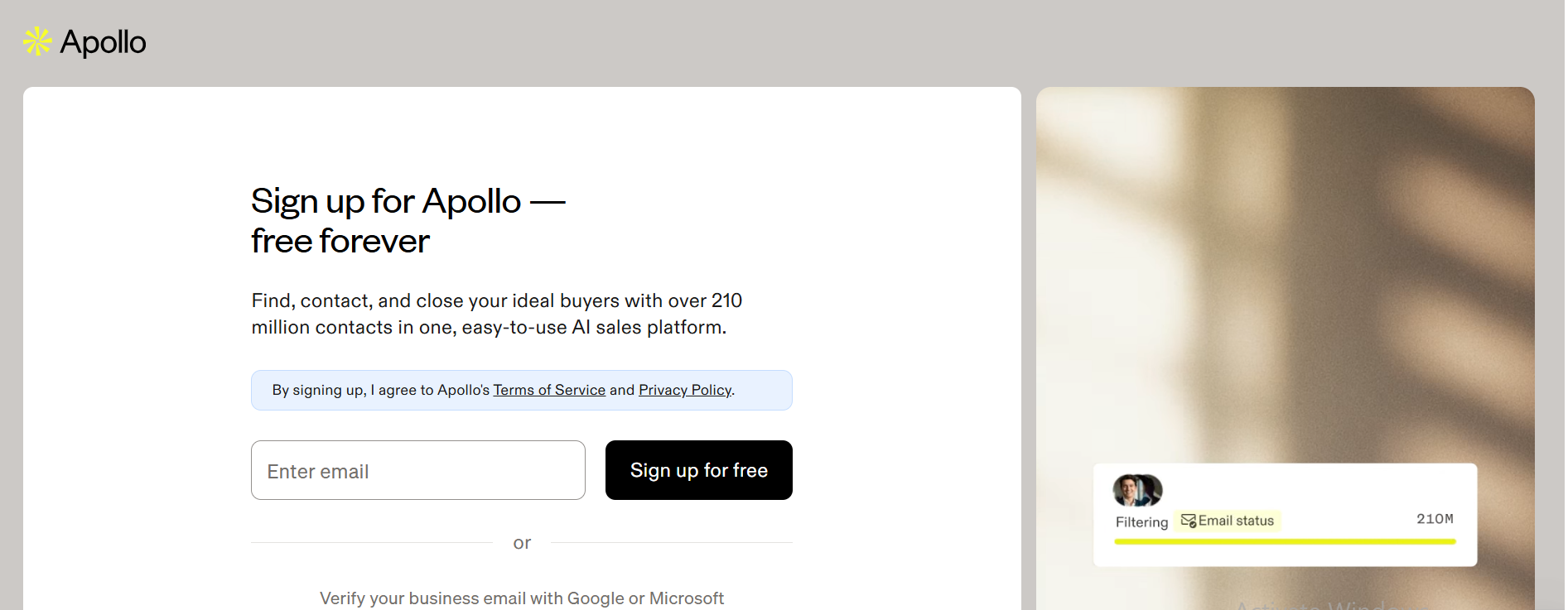
3. Apollo – Outbound Done Right:
Apollo has exploded in popularity because it does one thing really well: outbound at scale. With a massive database of 250M+ verified contacts, it’s perfect for teams that live and breathe cold outreach.
You can set up personalized sequences across LinkedIn, calls, and emails ,and track what’s actually working.
👉Best For: SDR teams that rely heavily on cold outreach and need fresh data constantly.
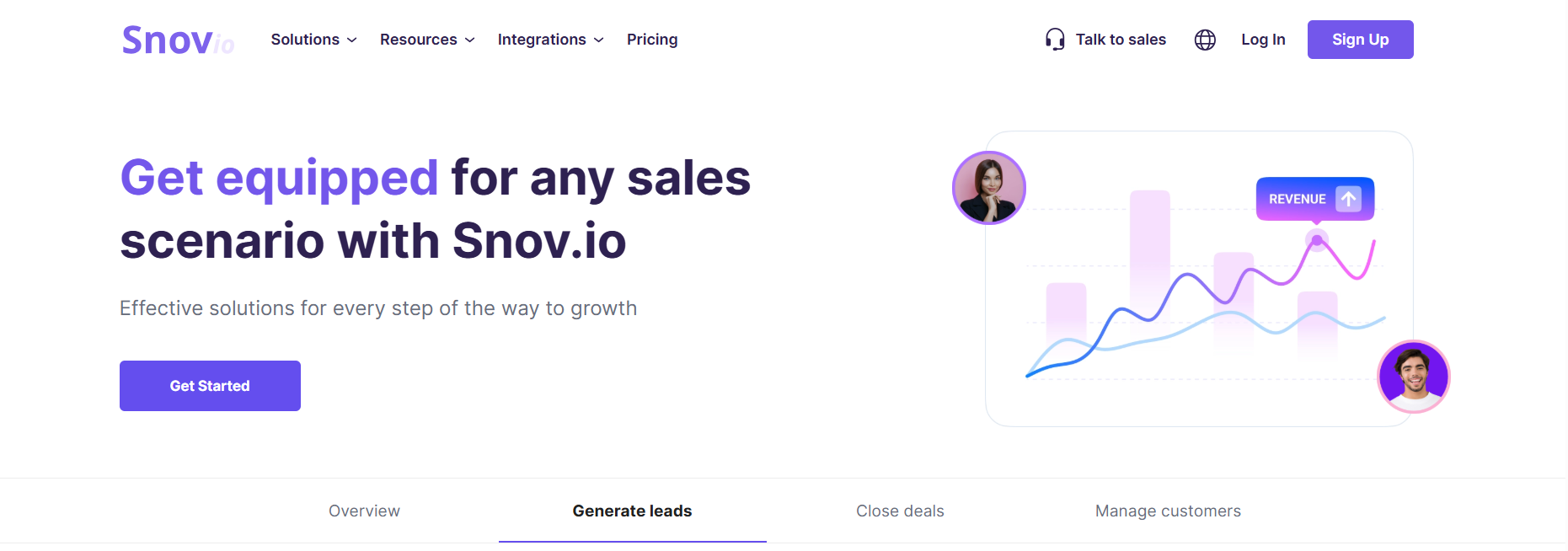
4. Snov – Budget-Friendly Prospecting:
Need something simple and affordable? Snov.io is a great starting point. It helps you find, verify, and email leads without draining your budget. Perfect for freelancers, small agencies, or early-stage startups.
👉Best For: Small teams that need a cost-effective tool to find and contact leads.
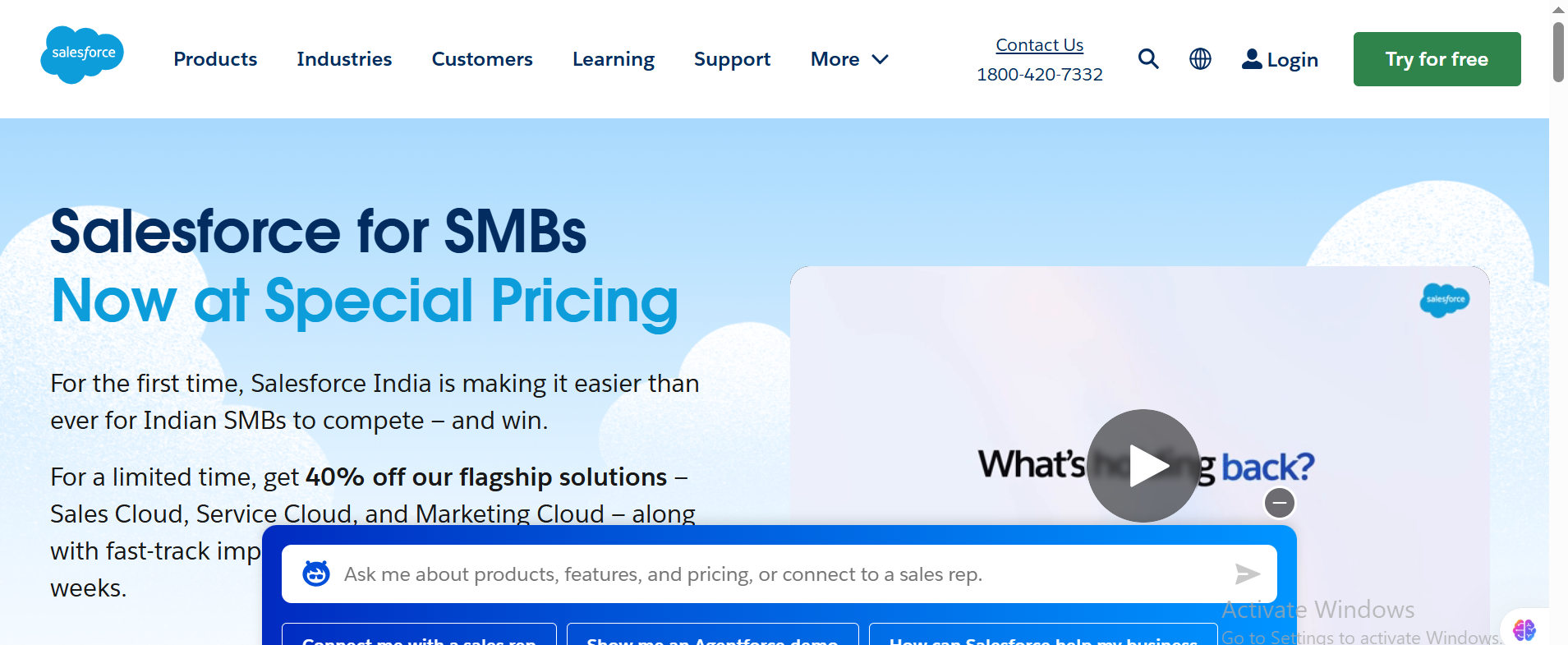
5. Salesforce – The Enterprise Giant:
Salesforce is still the heavyweight champ when it comes to enterprise CRM. With Einstein AI, it can predict lead conversions, score prospects, and give you ultra-detailed pipeline visibility.
It’s expensive and complex, but if you’re running big teams with complex processes, nothing beats it.
👉Best For: Enterprises with large, multi-level sales organizations.
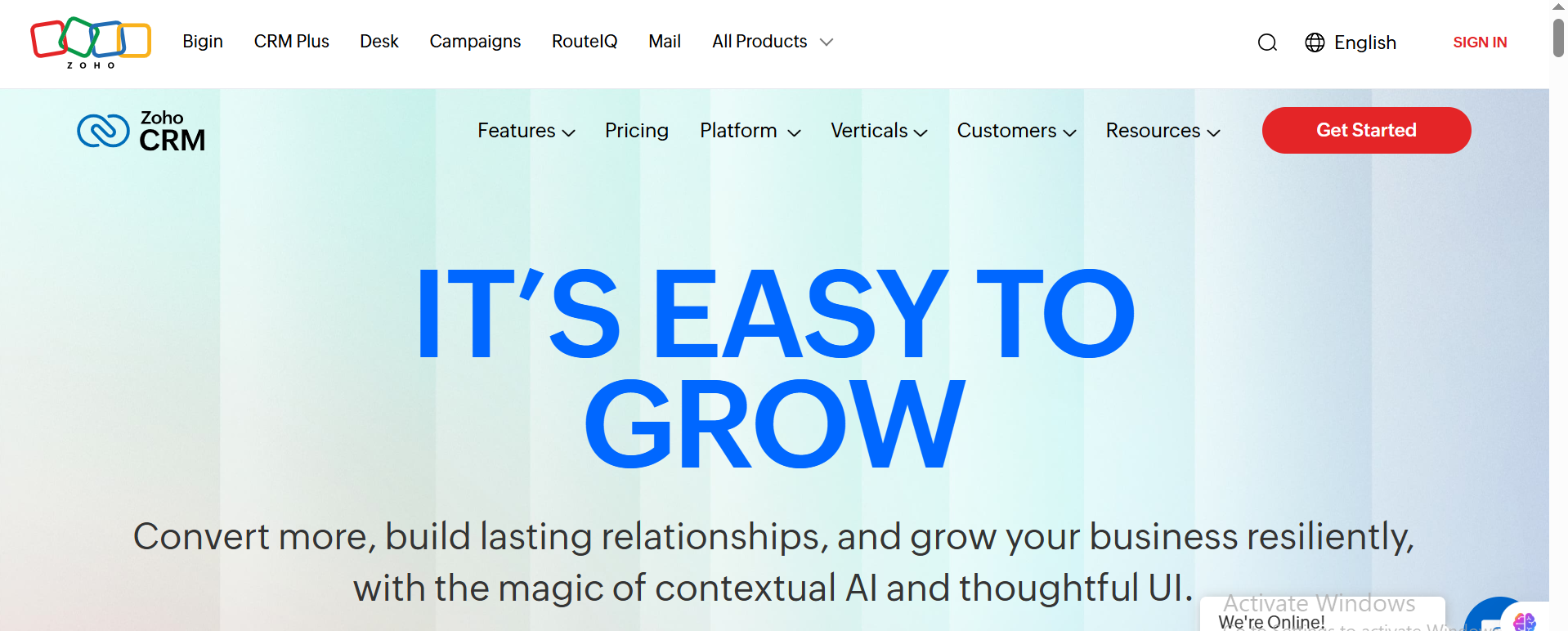
6. Zoho CRM – The Value Pick:
Zoho CRM is like Salesforce’s affordable cousin. It offers solid lead scoring, automation, and analytics at a much lower price. Plus, Zoho’s ecosystem of apps makes it versatile for SMBs.
👉Best For: Small and medium businesses that need a balance of features and price.

7. ZoomInfo – The Data Powerhouse:
ZoomInfo is all about data at scale. It gives you access to firmographics, technographics, and intent data that’s perfect for account-based marketing.
It’s pricey, but if you’re running big outbound or ABM campaigns, the depth of data pays off.
👉Best For: Enterprise sales teams with large budgets.
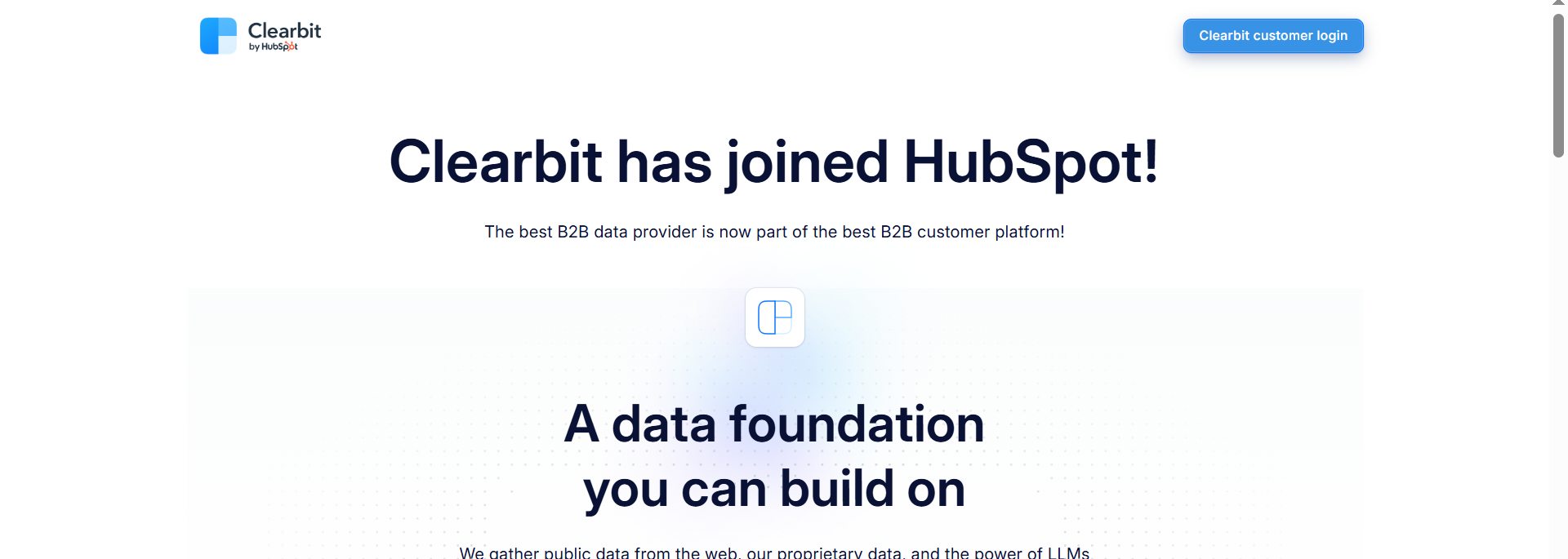
8. Clearbit – Enrichment in Real Time:
Clearbit shines when you need real-time data enrichment. It doesn’t just give you a lead ,it tells you their industry, revenue, funding, and even what tools they use. Perfect for personalization.
👉Best For: Teams running highly targeted campaigns that require deep context.
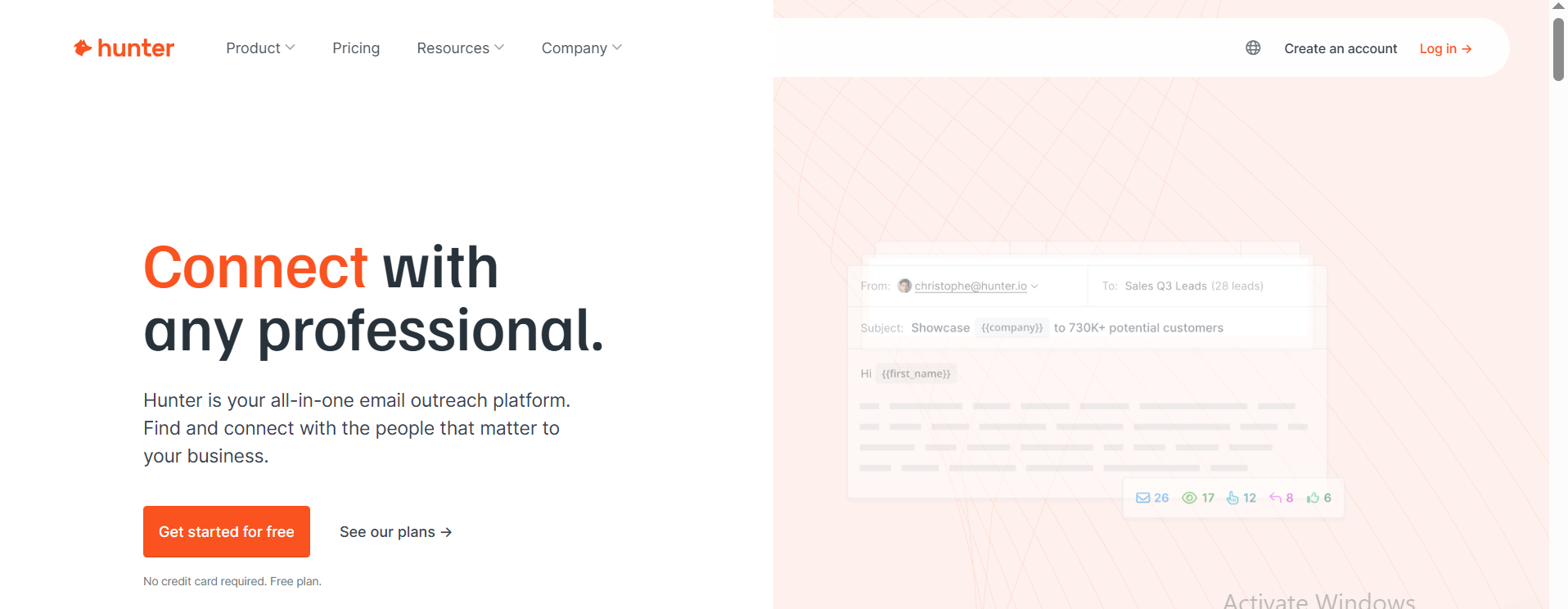
9. Hunter – Fast Email Finder:
Hunter.io is the simplest way to find and verify professional emails. It’s not flashy, but it works , especially for recruiters, freelancers, and small teams.
👉Best For: Quick, reliable email finding without the bells and whistles.
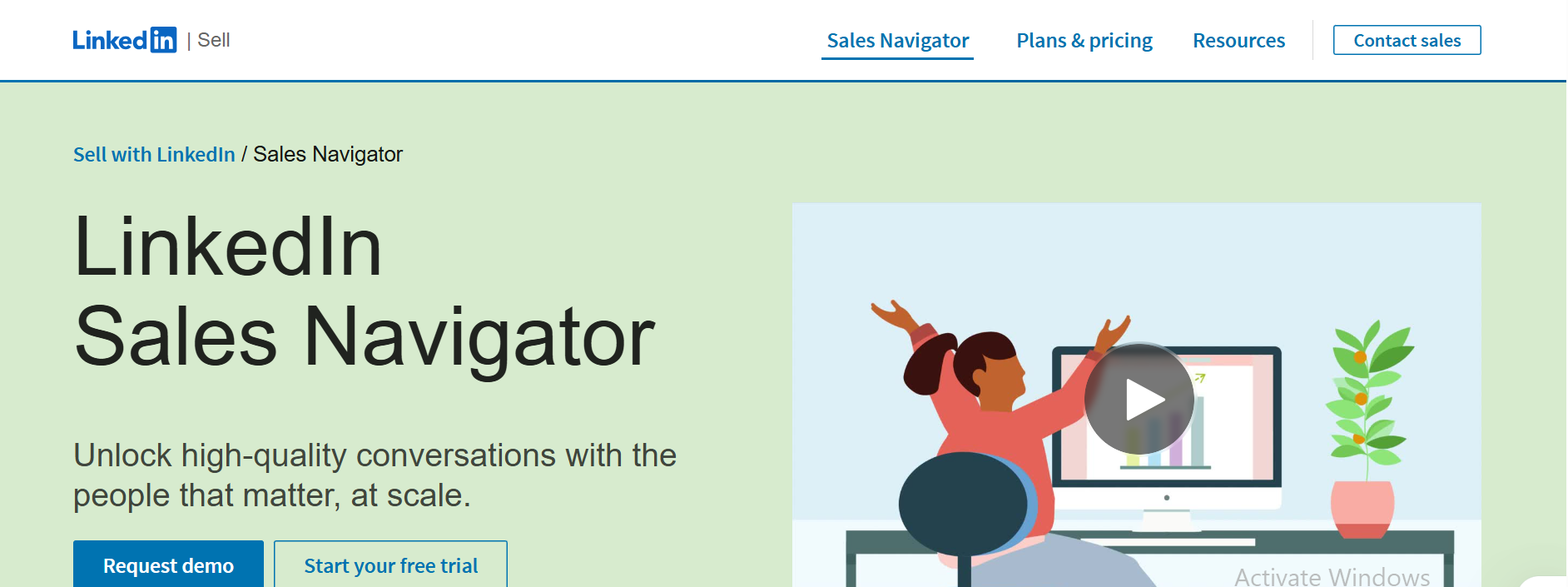
10. LinkedIn Sales Navigator – Social Selling Made Easy:
Sales Navigator is LinkedIn’s own tool for prospecting. With advanced filters, lead recommendations, and InMail outreach, it’s the go-to for sales reps who rely on networking.
👉Best For: Sales reps who spend most of their time on LinkedIn building relationships.
Common Mistakes Companies Make with Lead Generation Tools
Even the best lead generation tool won’t help if it’s misused. Here are the biggest pitfalls:
► Chasing Volume Over Quality:
Collecting thousands of leads sounds good, but without lead qualification, you’re filling your pipeline with noise.
► Ignoring CRM Integration: Leads stuck in spreadsheets get forgotten. Without syncing to HubSpot CRM or Salesforce, opportunities slip away.
► Skipping AB Testing: Running campaigns without AB testing wastes opportunities. Small tweaks to subject lines can boost reply rates by 20–30%.
► Over-Relying on Free Plans: Free plans are useful for testing but often limit enrichment, bulk verification, and CRM integration. Paid plans unlock the features needed for scale.
► Weak Follow-Up Strategy: A common issue: leads are captured but not nurtured. Without proper lead management, even high-quality leads go cold.
How to Choose the Right B2B Lead Generation Tool
Not all tools fit every business. Before you invest, ask yourself:
- Does it integrate with my CRM tool and email system?
- Is the data accurate, compliant, and regularly updated?
- Does it offer AI-powered lead qualification?
- Can it scale with my B2B company as we grow?
- Does the pricing align , from free plan to paid plan tiers?
Other Tools Worth a Look:
- Lusha – Chrome extension for quick contacts
- Clay – Combines multiple enrichment sources into workflows
- Uplead – Affordable alternative to ZoomInfo
- Seamless.ai – AI-powered outbound prospecting
Use Cases by Business Size
- Startups: Need simple, affordable solutions (Oppora.ai, Snov.io).
- SMBs: Balance between cost and advanced features (Zoho CRM, Apollo.io).
- Enterprises: Advanced lead management, AI analytics, and massive datasets (Salesforce, ZoomInfo).
Where B2B Lead Generation is Headed Next
The future isn’t about more tools, it’s about smarter workflows:
- AI agents fully automating prospecting.
- Predictive personalization powered by LLMs.
- Conversational AI engaging leads in real time.
- Compliance automation simplifying GDPR/CCPA challenges.
How Oppora.ai Makes Life Easier
Here’s what it looks like when you actually use Oppora.ai in your workflow:
- Find prospects with advanced filters or LinkedIn Extension.
- Capture them instantly with one click.
- Verify their email in real time.
- Let AI score them so you know who’s worth chasing.
- Personalize outreach with dynamic AI variables.
- Launch campaigns across LinkedIn and email.
- Manage all replies in one inbox (Oppobox).
- Sync everything into your CRM automatically.
How We Work: A Real-World Workflow with Oppora.ai
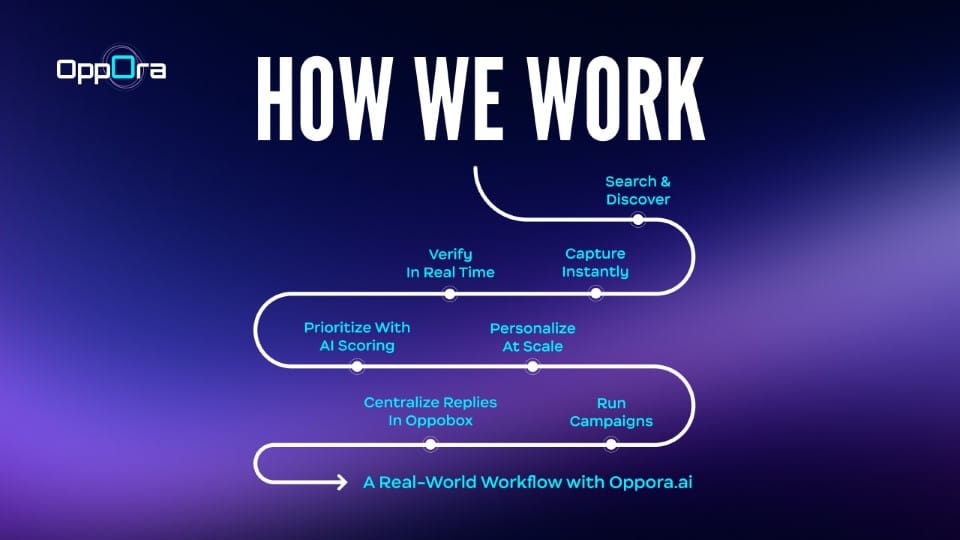
Oppora.ai is built to replace the chaos of juggling multiple tools with one clean, AI-powered workflow. Instead of wasting hours on manual prospecting, you can move from discovery to CRM sync in minutes. Here’s how it works in practice:
- Search & Discover – Use Oppora’s LinkedIn Extension and advanced filters to find prospects that perfectly match your Ideal Customer Profile (ICP).
- Capture Instantly – Add leads to your workflow in one click with the Chrome Extension, eliminating the need for spreadsheets.
- Verify in Real Time – Oppora checks every email instantly, so your outreach lists are always clean and bounce-free.
- Prioritize with AI Scoring – Leads are automatically ranked based on intent, fit, and conversion probability.
- Personalize at Scale – Insert AI Variables into your messages and use AI Email Templates to craft highly relevant outreach in seconds.
- Run Campaigns – Launch multi-step, automated drip sequences across LinkedIn and email — no manual follow-ups required.
- Centralize Replies in Oppobox – Keep every response and conversation in one inbox, so nothing slips through the cracks.
- Sync Effortlessly – Push all activity and outcomes directly into your CRM with a single click.
💡 The result? From prospecting to pipeline in under 30 minutes — that’s the Oppora difference: less grind, more growth.
Expanded FAQs
Q1: What’s the best lead generation tool for startups?
A: Oppora.ai offers automation, CRM integration, and affordability in one platform.
Q2: How does LinkedIn lead generation compare to email?
A: LinkedIn lead generation builds trust faster but email scales better. The best strategy combines both.
Q3: Are free plans enough?
A: Free plans are fine for testing, but serious lead generation efforts require paid plans with enrichment and verification.
Q4: How do I ensure high-quality leads?
A: Use lead qualification tools, enrichment data, and AB testing for campaigns.
Q5: What role does HubSpot play in lead generation?
A: HubSpot Marketing Hub attracts leads via inbound while HubSpot CRM manages and nurtures them.
Q6: What’s the ROI of lead generation software?
A: Most B2B companies save 4+ hours daily and increase conversion rates by 20–40%.
Q7: Can Google Sheets still be used?
A: Yes, but limited. For scale, use CRM integration with tools like Salesforce or HubSpot.
Q8: How does lead forensics help?
A: It reveals anonymous website visitors, turning traffic into potential leads.
Q9: What mistakes kill campaigns?
A: Skipping AB testing, ignoring lead management, and over-relying on free plans.
Q10: What’s the difference between a lead gen tool and a CRM tool?
A: Lead gen tools find and qualify leads; CRMs like HubSpot CRM manage and nurture them.
Final Take:
In 2025, lead generation is less about “finding emails” and more about building scalable, smart workflows.
- Use Oppora.ai if you want one tool that does it all.
- Use HubSpot if inbound is your main driver.
- Use Apollo.io if you’re all about outbound.
- Use Salesforce/ZoomInfo if you’re running enterprise-scale sales.
👉 Bottom line: stop juggling 5 different tools. If you want speed, accuracy, and scale in one package, Oppora.ai is where you start.